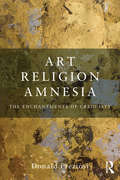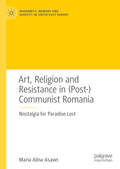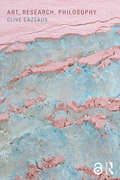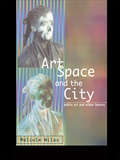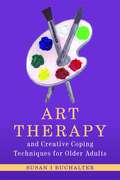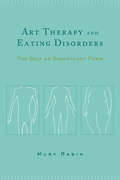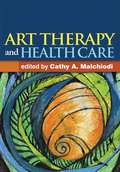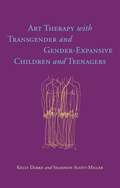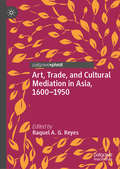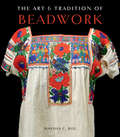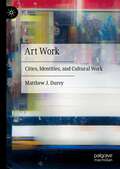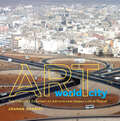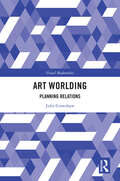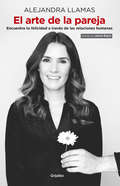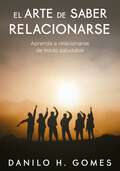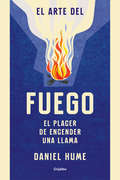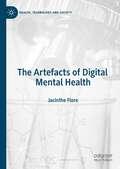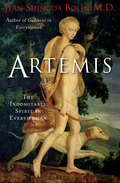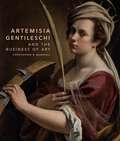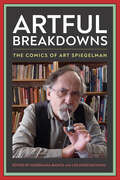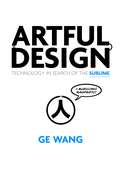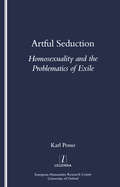- Table View
- List View
Art, Religion, Amnesia: The Enchantments of Credulity
by Donald PreziosiArt, Religion, Amnesia addresses the relationship between art and religion in contemporary culture, directly challenging contemporary notions of art and religion as distinct social phenomena and explaining how such Western terms represent alternative and even antithetical modes of world-making. In this new book, Professor Preziosi offers a critique of the main thrust of writing in recent years on the subjects of art, religion, and their interconnections, outlining in detail a perspective which redefines the basic terms in which recent debates and discussions have been articulated both in the scholarly and popular literature, and in artistic, political and religious practice. Art, Religion and Amnesia proposes an alternative to the two conventional traditions of writing on the subject which have been devoted on the one hand to the ‘spiritual’ dimensions of artistry, and on the other hand to the (equally spurious) ‘aesthetic’ aspects of religion. The book interrogates the fundamental assumptions fuelling many current controversies over representation, idolatry, blasphemy, and political culture. Drawing on debates from Plato’s proposal to banish representational art from his ideal city-state to the Danish cartoons of Mohamed, Preziosi argues that recent debates have echoed a number of very ancient controversies in political philosophy, theology, and art history over the problem of representation and its functions in individual and social life. This book is a unique re-evaluation of the essential indeterminacy of meaning-making, marking a radically new approach to understanding the inextricability of aesthetics and theology and will be of interest to students and researchers in art history, philosophy and religion and cultural theory.
Art, Religion and Resistance in: Nostalgia for Paradise Lost (Modernity, Memory and Identity in South-East Europe)
by Maria Alina AsaveiThis book illuminates the interconnections between politics and religion through the lens of artistic production, exploring how art inspired by religion functioned as a form of resistance, directed against both Romanian national communism (1960-1989) and, latterly, consumerist society and its global market. It investigates the critical, tactical and subversive employments of religious motifs and themes in contemporary art pieces that confront the religious ‘affair’ in post-communist Romania. In doing so, it addresses a key gap in previous scholarship, which has paid little attention to the relationship between religious art and political resistance in communist Central and South-East Europe.
Art, Research, Philosophy
by Clive CazeauxArt, Research, Philosophy explores the emergent field of artistic research: art produced as a contribution to knowledge. As a new subject, it raises several questions: What is art-as-research? Don’t the requirements of research amount to an imposition on the artistic process that dilutes the power of art? How can something subjective become objective? What is the relationship between art and writing? Doesn’t description always miss the particularity of the artwork? This is the first book-length study to show how ideas in philosophy can be applied to artistic research to answer its questions and to make proposals for its future. Clive Cazeaux argues that artistic research is an exciting development in the historical debate between aesthetics and the theory of knowledge. The book draws upon Kant, phenomenology and critical theory to show how the immediacies of art and experience are enmeshed in the structures that create knowledge. The power of art to act on these structures is illustrated through a series of studies that look closely at a number of contemporary artworks. This book will be ideal for postgraduate students and scholars of the visual and creative arts, aesthetics and art theory.
Art, Space and the City
by Malcolm MilesPublic art - the making, management and mediation of art outside its conventional location in museums and galleries, and the livable city - a concept involving user-centred strategies for urban planning and design, are both socially produced but have emerged from different fields and tend to be discussed in isolation.This book applies a range of critical perspectives which have emerged from different disciplines - art criticism, urban design, urban sociology, geography and critical theory - to examine the practice of art for urban public spaces, seeing public art from positions outside those of the art world to ask how it might contribute to possible urban futures. Exploring the diversity of urban politics, the functions of public space and its relation to the structures of power, the roles of professionals and users in the construction of the city, the gendering of space and the ways in which space and citizen are represented, the book explains how these issues are as relevant to architecture, urban design and urban planning as they are to public art. Drawing on a wealth of images from across the UK and Europe and the USA, in particular, the author questions the effectiveness of public art in achieving more convivial urban environments, whilst retaining the idea that imagining possible futures is as much part of a democratic society as using public space.
Art Therapy and Creative Coping Techniques for Older Adults
by Susan I. BuchalterArt and the therapeutic uses of art provide older adults with valuable ways in which to express and share their feelings, needs and fears, and with a resource for coping with life's major changes. This practical book is filled with step-by-step exercises for art therapists and other professionals to use in work with older adults, either individually or in groups. The author provides brief, imaginative warm-ups, which encourage participants to become more at ease expressing themselves creatively. She offers ideas for engaging and innovative creative projects across a range of media, including art, music, movement, poetry and creative writing, all of which can be adapted, personalised or combined to meet the particular needs of individual participants. Points to consider when working with this client group are explored, and case study examples, with participants' artwork, are included throughout. Appropriate for use with all relatively able older adults, including those with depression, anxiety or in the early stages of dementia, this will be an invaluable tool for art therapists as well as counsellors, psychotherapists, social workers and carers.
Art Therapy and Eating Disorders: The Self as Significant Form
by Mury RabinArt Therapy and Eating Disorders is a step-by-step approach to a new and extremely promising technique for treating people with eating disorders—children as well as adults, male and female sufferers alike—that has proven to be a crucial aid to identification, prevention, and intervention. <P><P>Mury Rabin demonstrates how her award-winning art therapy technique, known as Phenomenal and Nonphenomenal Body Image Tasks or "PNBIT," can be used by clinicians other than art therapists and shows its effectiveness in combination with diverse therapeutic techniques. Unlike traditional therapy programs that treat symptoms, this technique focuses on root causes and consists of a series of tasks—some phenomenal: weight recording, mirror viewing, and body dimension estimates; others not: chromatic family line drawings and body image mandalas. The book includes five case studies that illustrate how the PNBIT technique functions in practice.
Art Therapy and Health Care
by Cathy MalchiodiDemonstrating the benefits of creative expression for patients living with acute or chronic illness, this volume provides a complete, practical introduction to medical art therapy. It presents evidence-based strategies for helping people of all ages from young children to older adults cope with physical and cognitive symptoms, reduce stress, and improve their quality of life. The book includes detailed case material and 110 illustrations. It describes ways to work with individuals and groups with specific health conditions and challenges, as well as their family members. Contributors are experienced art therapists who combine essential knowledge with in-depth clinical guidance.
Art Therapy with Transgender and Gender-Expansive Children and Teenagers
by Kelly Darke Shannon Scott-MillerAn educational and inspirational book that offers practical guidance for art therapists working with transgender and gender-expansive youth and their families. It provides art therapy goals, recommended treatments and coping skills to use with this client group.Each chapter looks at how art therapy can address a different concern or aspect of the experience, such as transitioning, bullying, and recognizing or building a support system. It includes detailed case studies and cutting-edge art therapy interventions, which help young people to express the emotions surrounding the discovery of gender identity, the transition process, and self-care.
Art, Trade, and Cultural Mediation in Asia, 1600–1950
by Raquel A. ReyesThis Palgrave Pivot explores the social and cultural impact of global trade at a micro-level from around 1600 to 1950. Bringing together the collaborative skills of cultural, social, economic, and art historians, it examines how the diffusion of trade, goods and objects affected people’s everyday lives. The authors tell several stories: of the role played by a host of intermediaries – such as apothecaries, artisans and missionaries who facilitated the process; of objects such as Japanese export lacquer-ware and paintings; of how diverse artistic influences came to be expressed in colonial church architecture in the Philippines; of revolutionary changes wrought on quotidian tastes and preferences, as shown in the interior decoration of private homes in the Dutch East Indies; and of transformations in the smoking and drinking habits of Southeast Asians. The chapters consider the conditions from which emerged new forms of artistic production and transfer, fresh cultural interpretations, and expanded markets for goods, objects and images.
The Art & Tradition of Beadwork
by Marsha C. BolA former professor and museum director offers a fascinating, in-depth look at the culture and history of beaded objects around the world. From a beaded dress found in an ancient Egyptian tomb to the beaded fringe on a 1920s Parisian flapper&’s hem, humans throughout history have used beading as a way to express, adorn, and tell a story. Bol explores beadwork across the world and through the ages, showing how beading has taken on many different styles, forms, and purposes for different cultures. She looks at children&’s clothing, puberty ceremonies, burials, emblems of social status and leadership, festivals, and many other cultural occasions that involve the use of beadwork. Images of artifacts and heirlooms as well as photography of people and their beadwork enhance the scholarship of this book for a beautiful, enlightening addition to art, history, multicultural collections everywhere.
Art Was Their Weapon: The History of the Perth Workers' Art Guild
by Dylan HydeThe politics, art and culture of Perth's Workers Art Guildare detailed in this comprehensive history, as well as the personal andprofessional lives of some of the movement's key figures.The Workers' Art Guild was a left-leaning political force andinfluential cultural movement of the 1930s and 1940s in Perth. Policeand intelligence arms kept close tabs on the Guild and its members,jailing some and intimidating many others prior to and during theperiod of the banning of the Communist Party in Australia.The book covers the personal and professional lives of key figuressuch as writer Katharine Susannah Prichard and theatre maverickKeith George, while charting the influence of the Communist Party onWestern Australian artists.
Art Work: Cities, Identities, and Cultural Work
by Matthew J. DureyThis book is about the relationship between art and work in the cultural economy. It is an exploration of the experiences of people working in cultural and creative industries, and of the importance of place, identity, and culture in postindustrial society. Drawing on fieldwork exploring the conditions of cultural work, identity, and postindustrial cities in Newcastle upon Tyne, UK and Hamburg, Germany, the book argues that the conditions of work in the cultural economy are the result of a contradictory tension between art and economy, which manifests in various ways in artists’ conditions of work, their identities, and their relationship to the changing landscapes of postindustrial cities. This is explored through a series of stories from people working in cultural and creative industries, in which they highlight significant contradictions, obstacles, and opportunities in negotiating the cultural economy, casting light on the importance of art and culture in postindustrial society.
Art Work: Invisible Labour and the Legacy of Yugoslav Socialism
by Katja PraznikIn Art Work, Katja Praznik counters the Western understanding of art – as a passion for self-expression and an activity done out of love, without any concern for its financial aspects – and instead builds a case for understanding art as a form of invisible labour. Focusing on the experiences of art workers and the history of labour regulation in the arts in socialist Yugoslavia, Praznik helps elucidate the contradiction at the heart of artistic production and the origins of the mystification of art as labour. This profoundly interdisciplinary book highlights the Yugoslav socialist model of culture as the blueprint for uncovering the interconnected aesthetic and economic mechanisms at work in the exploitation of artistic labour. It also shows the historical trajectory of how policies toward art and artistic labour changed by the end of the 1980s. Calling for a fundamental rethinking of the assumptions behind Western art and exploitative labour practices across the world, Art Work will be of interest to scholars in East European studies, art theory, and cultural policy, as well as to practicing artists.
Art World City: The Creative Economy of Artists and Urban Life in Dakar (African Expressive Cultures)
by Joanna Grabski“Insightful . . . should be on the bookshelf of anyone interested in contemporary art on the continent of Africa, its politics, its display, its economics.” —African ArtsArt World City focuses on contemporary art and artists in the city of Dakar, a famously thriving art metropolis in the West African nation of Senegal. Joanna Grabski illuminates how artists earn their livelihoods from the city’s resources, possibilities, and connections. She examines how and why they produce and exhibit their work and how they make an art scene and transact with art world mediators such as curators, journalists, critics, art lovers, and collectors from near and far. Grabski shows that Dakar-based artists participate in a platform that has a global reach. They extend Dakar’s creative economy and the city’s urban vibe into an “art world city.”“In her fine-grained analysis, Joanna Grabski demonstrates the ways that the urban environment and the sites of art production, exhibition, and sale imbricate one another to constitute Dakar as an Art World City.” —Mary Jo Arnoldi, Curator, Anthropology, National Museum of Natural History, Smithsonian“A valuable addition to the anthropology of cities and of art worlds. It stretches and revises the notion of art world to include multiple scales, and illustrates how the city enables simultaneous engagement for artists with local, national, Pan-African, and global discourses and platforms.” —City & Society“A beautiful book. The photographs, most of which are by the author, are stunning.” —College Art Association Reviews
Art Worlding: Planning Relations (Visual Modernities)
by Julie CrawshawTracing the associations between artists, planners and engineers with and within the materials of our environment, this book introduces the more than human relational theory of ‘art worlding’ as a way of coming to know our relational continuity. Through a series of ‘sculptural’ ethnographies of the making and doing of art in urban and rural contexts, the author re-orientates the art-planning relationship in recognition of art practice as a way of knowing more than human relations, thus promoting the organic continuity between humans and environment. Methodologically innovative, the book traces the inter-relation of art as part of planning practice and integrates artistic practice as a mode of inquiry within planning research. It introduces a new paradigm for public art scholarship and practice that re-connects art and planning. Art Worlding: Planning Relations will appeal to sociologists and social anthropologists with interests in art practice, as well as those working in the fields of urban and rural planning, urban regeneration and cultural management.
El arte de la pareja: Encuentra tu felicidad a través de las relaciones humanas
by Alejandra LlamasEstar o no en pareja es un concepto: lo ideal es crear una profunda capacidad de amarnos a nosotros mismos y amar a los otros, con libertad y conciencia. La exitosa autora Alejandra Llamas presenta un libro para encontrar nuestra realización a través de las relaciones humanas. ¿Cuál es el secreto de la vida en pareja? ¿Cuál es su propósito? ¿En verdad debemos vivir de esa manera? Y si es así, ¿qué hace a una relación feliz o funcional? Prólogo de Jaime Bayly Si nuestra elección es vivir en pareja, hay que vivirla para despertar espiritualmente, para lograr una evolución personal como seres humanos y para aprender lo que verdaderamente significa amar. Pero si decidimos no hacerlo, debemos saber alejarnos de concepciones que nos lastiman y nos hacen sentir inadecuados o desestabilizadores del sistema social. Estar o no en pareja es un concepto: lo ideal es crear una profunda capacidad de amarnos a nosotros mismos y amar a los otros, con libertad y conciencia. Extracto del prólogo: "Este nuevo libro de Alejandra Llamas es brillante, lúcido, valiente, cargado de sabiduría. Es un libro enormemente útil porque enseña cómo hacer las cosas bien y cómo no hacerlas mal en el arte de vivir en pareja; es un libro supremamente valiente porque se atreve, desde la razón, a refutar y desbaratar tantos prejuicios, tópicos, lugares comunes y cursilerías que en nada contribuyen a la felicidad; y es un libro sabio porque no le sobra una palabra y las ideas se exponen con una delicadeza, una sensibilidad y una precisión yo diría que artísticas." - Jaime Bayly
El arte de saber relacionarse: Aprenda a relacionarse de modo saludable
by Danilo Henrique Gomes VERÓNICA DEL CARMEN PEÑALOZA MOLINA"El arte de saber relacionarse" Autor: Danilo Henrique Gomes "De tanto relacionarse con máquinas más que con personas, los seres humanos aparentemente perdieron las habilidades sociales necesarias para mantener buenas relaciones. Existen aquellos que desistieron de relacionarse y hoy viven encerrados en pocos metros cúbicos intentando vivir la vida a solas"
El arte del fuego: El placer de encender una llama
by Daniel HumeDaniel Hume nos lleva a través de este libro de aventuras y curiosidades por un viaje en las zonas más salvajes de nuestro planeta con un objetivo: prender la primera chispa de una hoguera a través de técnicas ancestrales. Es el fascinante arte del fuego. Un increíble viaje al origen del fuego, el elemento que nos ha convertido en quienes somos. Desde el inicio de los tiempos, en cada rincón del planeta, los humanos se han apiñado alrededor del fuego. Ha sido fuente de inspiración para miles de historias contadas a su alrededor, y conecta la esencia de nuestro ser con la naturaleza. La capacidad de prender una hoguera es una de las habilidades más importantes que cualquier aventurero puede poseer. Y muy poco se ha escrito sobre ello, hasta ahora. Acompañado de fotografías e ilustraciones, Daniel Hume nos invita a una trepidante aventura por las culturas del mundo para aprender deprimera mano las técnicas, mitos y curiosidades en torno al fascinante arte del fuego. Daniel Hume ha visitado los rincones más recónditos del mundo y ha aprendido decenas de técnicas ancestrales para prender fuego de la nada. Desde la primera chispa hasta la última llama, conoceremos cómo las culturas más escondidas en selvas y lugares remotos de alrededor del globo prenden fuego, ese valiosísimo agente que da calor, luz y energía.
The Artefacts of Digital Mental Health (Health, Technology and Society)
by Jacinthe FloreThe Artefacts of Digital Mental Health focuses on smartphone apps, wearables devices, and ingestible sensors, which are at the centre of research, development, and investment in mental health and digitalisation. The book aims to examine digital mental health through three artefacts that are defined by their ubiquity, everydayness, popularity, innovation and hype, and emergent qualities. It engages with theoretical approaches to technology, mental health, and wellbeing informed by Science and Technology Studies, sociological studies of health and mental health, and sociomaterialism. The book brings together different theories of mental health, subjectivity, the body, care, and digitalisation alongside biodigital artefacts as exemplars of transformations in digital mental health.
Artemis: The Indomitable Spirit in Everywoman
by Jean Shinoda Bolen&“Jean Shinoda Bolen provides ancient and modern ways to be our authentic, courageous, and passionate selves. Jean herself is an Artemis.&”—Gloria Steinem Worshiped in Ancient Greece as a protectress of young girls, Artemis was the goddess of hunting, nature, and chastity—the original &“wild woman.&” In Artemis, Jungian analyst and bestselling author, Jean Shinoda Bolen, revives the goddess Artemis to reclaim the female passion and persistence to survive and succeed. But an indomitable spirit isn&’t just reserved for the gods. In her book, Dr. Bolen revives the myth of Atalanta, an archetypal Artemis and mere mortal. To Atalanta, fate was no obstacle. Left to die because she was born a girl, she faces the Calydon Boar and outruns any man attempting to claim her as his wife. In Artemis, women are encouraged to discover their inner heroine—the activist who never gives up, who cannot be subdued. Whether women&’s rights activists or Princess Merida from Brave, the Artemis personality is embodied in the modern women. Hailed by Isabel Allende, as a &“beautiful, inspiring book,&” Artemis is dedicated to all women and girls who discover her unconquerable spirit in themselves or others. Inside find: · Examples of Artemis in real-life and popular culture · Ancient and modern ways to be your authentic self · A source of strength, power, and integrity &“Bolen connects Artemis to contemporary figures such as environmental activist Julia Butterfly Hill, author Cheryl Strayed, and journalist Lara Logan . . . Bolen also discusses other goddess archetypes, including the romance-oriented Aphrodite, contemplative Hestia, and Hecate, the wise crone. The exploration of Artemis and Atalanta as feminist icons is compelling.&”—Publishers Weekly
Artemisia Gentileschi and the Business of Art
by Christopher R. MarshallA new account of the renowned Baroque painter, revealing how her astute professional decisions shaped her career, style, and legacyArt has long been viewed as a calling—a quasi-religious vocation that drives artists to seek answers to humanity&’s deepest questions. Yet the art world is a risky, competitive business that requires artists to make strategic decisions, especially if the artist is a woman. In Artemisia Gentileschi and the Business of Art, Christopher Marshall presents a new account of the life, work, and legacy of the Italian Baroque painter, revealing how she built a successful four-decade career in a male-dominated field—and how her business acumen has even influenced the resurrection of her reputation today, when she has been transformed from a footnote of art history to a globally famous artist and feminist icon.Combining the most recent research with detailed analyses of newly attributed paintings, the book highlights the business considerations behind Gentileschi&’s development of a trademark style as she marketed herself to the public across a range of Italian artistic centers. The disguised self-portraits in her early Florentine paintings are reevaluated as an effort to make a celebrity brand of her own image. And, challenging the common perception that Gentileschi&’s only masterpieces are her early Caravaggesque paintings, the book emphasizes the importance of her neglected late Neapolitan works, which are reinterpreted as innovative responses to the conventional practices of Baroque workshops.Artemisia Gentileschi and the Business of Art shows that Gentileschi&’s remarkable success as a painter was due not only to her enormous talent but also to her ability to respond creatively to the continuously evolving trends and challenges of the Italian Baroque art world.
Artful Breakdowns: The Comics of Art Spiegelman (Tom Inge Series on Comics Artists)
by Georgiana Banita and Lee KonstantinouContributions by Georgiana Banita, Colin Beineke, Harriet Earle, Ariela Freedman, Liza Futerman, Shawn Gilmore, Sarah Hamblin, Cara Koehler, Lee Konstantinou, Patrick Lawrence, Philip Smith, and Kent Worcester A carefully curated, wide-ranging edited volume tracing Art Spiegelman’s exceptional trajectory from underground rebellion to mainstream success, Artful Breakdowns: The Comics of Art Spiegelman reveals his key role in the rise of comics as an art form and of the cartoonist as artist. The collection grapples with Spiegelman’s astonishing versatility, from his irreverent underground strips, influential avant-garde magazine RAW, the expressionist style of the comics classic Maus, the illustrations to the Jazz Age poem “The Wild Party,” and his response to the September 11 terrorist attacks to his iconic cover art for the New Yorker, his children’s books, and various cross-media collaborations. The twelve chapters cut across Spiegelman’s career to document continuities and ruptures that the intense focus on Maus has obscured, yielding an array of original readings. Spiegelman’s predilection for collage, improvisation, and the potent protest of silence shows his allegiance to modernist art. His cultural critique and anticapitalist, antimilitary positions shed light on his vocal public persona, while his deft intertextual strategies of mixing media archives, from comics to photography and film, amplify the poignance of his works. Developing new approaches to Spiegelman’s comics—such as the publication history of Maus, the history of immigration and xenophobia, and the cartoonist’s elevation of children’s comics—the collection leaves no doubt that despite the accolades his accessible comics have garnered, we have yet to grasp the full range of Spiegelman’s achievements in the realm of comics and beyond.
Artful Design: Technology in Search of the Sublime, A MusiComic Manifesto
by Ge WangWhat we make, makes us. This is the central tenet of Artful Design, a photorealistic comic book that examines the nature, purpose, and meaning of design. A call to action and a meditation on art, authenticity, and social connection in a world disrupted by technological change, this book articulates a fundamental principle for design: that we should design not just from practical needs but from the values that underlie those needs. Artful Design takes readers on a journey through the aesthetic dimensions of technology. Using music as a universal phenomenon that has evolved alongside technology, this book breaks down concrete case studies in computer-mediated toys, tools, games, and instruments, including the best-selling app Ocarina. Every chapter elaborates a set of general design principles and strategies that illuminate the essential relationship between aesthetics and engineering, art and design. Ge Wang implores us to both embrace and confront technology, not purely as a means to an end, but in its potential to enrich life. Technology is never a neutral agent, but through what we do with it—through what we design with it—it provides a mirror to our human endeavors and values. Artful Design delivers an aesthetic manifesto of technology, accessible yet uncompromising.
Artful Seduction: Homosexuality and the Problematics of Exile
by Karl Posso"The controversial works of Brazilian authors Silviano Santiago(1936-) and Caio Fernando Abreu (1948-96) offer distinctive but complementary explorations of male homosexual subjectivities formulated through displacement, exile and the abject. Posso examines the innovative ways in which these writers stage-manage Western poststructuralist thought to critique heterosexist exclusion in Brazil and in globalized popular and folk culture, and he explains how they draw on diverse cultural productions and art works to extend a general undermining of oppositional logic and psychoanalytic theory."
Arthashastra class 9 - NCERT - 23: अर्थशास्त्र ९वीं कक्षा - एनसीईआरटी - २३
by Rashtriy Shaikshik Anusandhan Aur Prashikshan Parishadअर्थशास्त्र 9वीं कक्षा का राष्ट्रीय शैक्षिक अनुसंधान और प्रशिक्षण परिषद् ने पुस्तक हिंदी भाषा में प्रकाशित किया गया है, इस पाठ्यपुस्तक में चार खंड और दिए गए है। पाठ्यपुस्तक में चार अध्याय दिए है - अध्याय एक पालमपूर गाँव की कहानी, अध्याय दो संसाधन के रुप में लोग, अध्याय तीन निर्धनताः एक चुनौती और अध्याय चार भारत मे खाद्य सुरक्षा आदी के विषय पर चर्चा की गई है।
